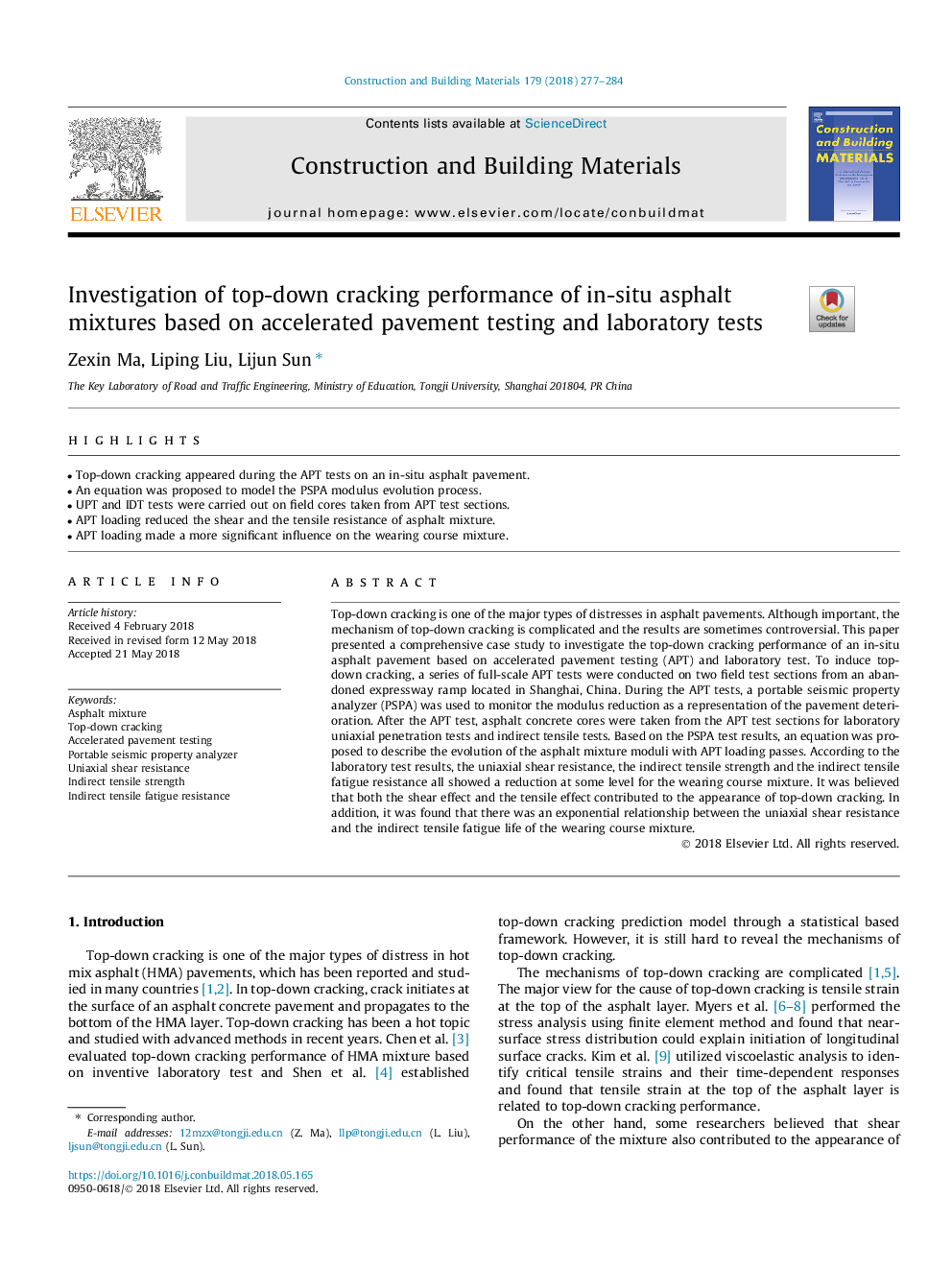| Article ID | Journal | Published Year | Pages | File Type |
|---|---|---|---|---|
| 6712704 | Construction and Building Materials | 2018 | 8 Pages |
Abstract
Top-down cracking is one of the major types of distresses in asphalt pavements. Although important, the mechanism of top-down cracking is complicated and the results are sometimes controversial. This paper presented a comprehensive case study to investigate the top-down cracking performance of an in-situ asphalt pavement based on accelerated pavement testing (APT) and laboratory test. To induce top-down cracking, a series of full-scale APT tests were conducted on two field test sections from an abandoned expressway ramp located in Shanghai, China. During the APT tests, a portable seismic property analyzer (PSPA) was used to monitor the modulus reduction as a representation of the pavement deterioration. After the APT test, asphalt concrete cores were taken from the APT test sections for laboratory uniaxial penetration tests and indirect tensile tests. Based on the PSPA test results, an equation was proposed to describe the evolution of the asphalt mixture moduli with APT loading passes. According to the laboratory test results, the uniaxial shear resistance, the indirect tensile strength and the indirect tensile fatigue resistance all showed a reduction at some level for the wearing course mixture. It was believed that both the shear effect and the tensile effect contributed to the appearance of top-down cracking. In addition, it was found that there was an exponential relationship between the uniaxial shear resistance and the indirect tensile fatigue life of the wearing course mixture.
Related Topics
Physical Sciences and Engineering
Engineering
Civil and Structural Engineering
Authors
Zexin Ma, Liping Liu, Lijun Sun,
